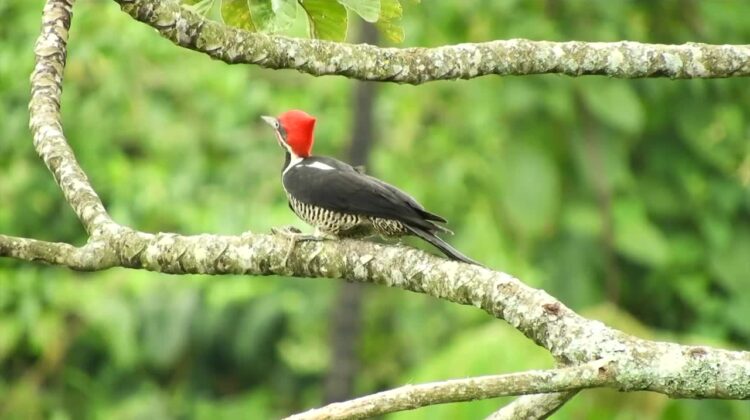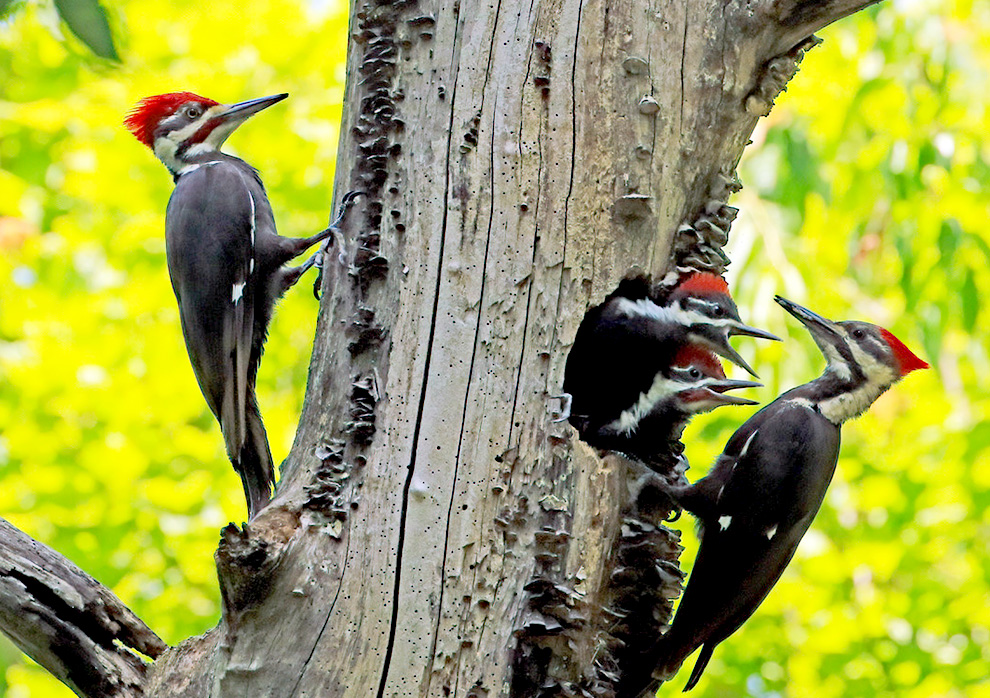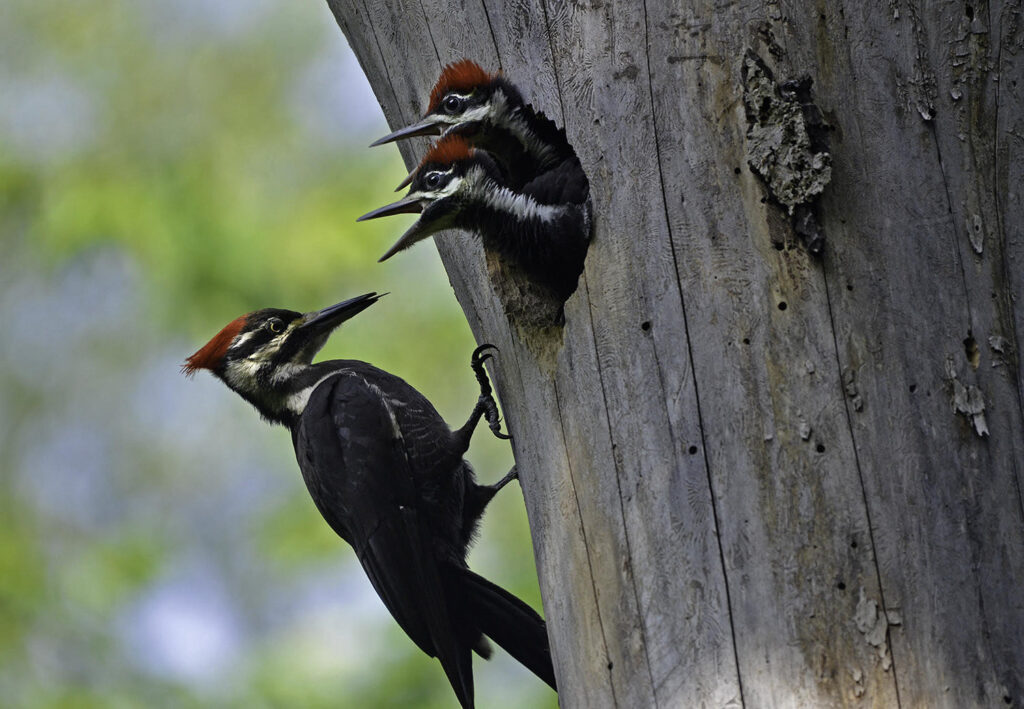
Have you ever wondered how woodpeckers can repeatedly peck at trees with such force without suffering from debilitating headaches or brain damage? These seemingly indestructible birds have evolved a remarkable set of adaptations that allow them to thrive in their challenging environments.

The Mystery of the Uninjured Brain
Woodpeckers deliver blows to trees with a force equivalent to 1,000 times the force of gravity. This is a staggering impact that would be fatal to most creatures. However, woodpeckers remain unscathed, thanks to a combination of physical and physiological adaptations.

One key adaptation is their specialized beak. Unlike a human hammer, a woodpecker’s beak is designed to penetrate wood rather than abruptly stopping. This reduces the force transmitted to the bird’s head. Additionally, strong neck muscles and a unique brain structure help to absorb the shock of each impact.
A Tongue Longer Than Its Bill

Another fascinating adaptation of woodpeckers is their unusually long tongue. This elongated organ is essential for reaching into crevices and extracting insects from deep within trees. Woodpeckers have developed a complex system of bones and cartilage, known as the hyoid apparatus, that allows them to extend their tongues to remarkable lengths.

The hyoid apparatus is anchored to the base of the tongue and extends backward and laterally. In woodpeckers, these extensions, called horns, can wrap around the back of the skull and even into the nostril. This unique arrangement enables the bird to store its long tongue when it’s not in use and to extend it to its full length when needed.
A Variety of Feeding Strategies
While all woodpeckers share the ability to peck at trees, they have evolved different feeding strategies. Some species, like sapsuckers, specialize in drilling holes in trees to extract sap. Others, such as flickers, primarily feed on ants. Pileated woodpeckers, on the other hand, are known for their impressive excavating skills, which they use to locate carpenter ants deep within trees.

Woodpeckers are truly remarkable creatures. Their ability to withstand the immense forces generated by their pecking is a testament to the power of natural selection. From their specialized beaks to their elongated tongues, these birds have evolved a suite of adaptations that allow them to thrive in their challenging habitats.

Thank you for the assembled info and data on woodpeckers, Hasan.
Are Kookaburras a type of woodpecker, and do they share the same physiology ?
If I’m not mistaken, kookaburras are a type of kingfisher
Very interesting thanks for the information